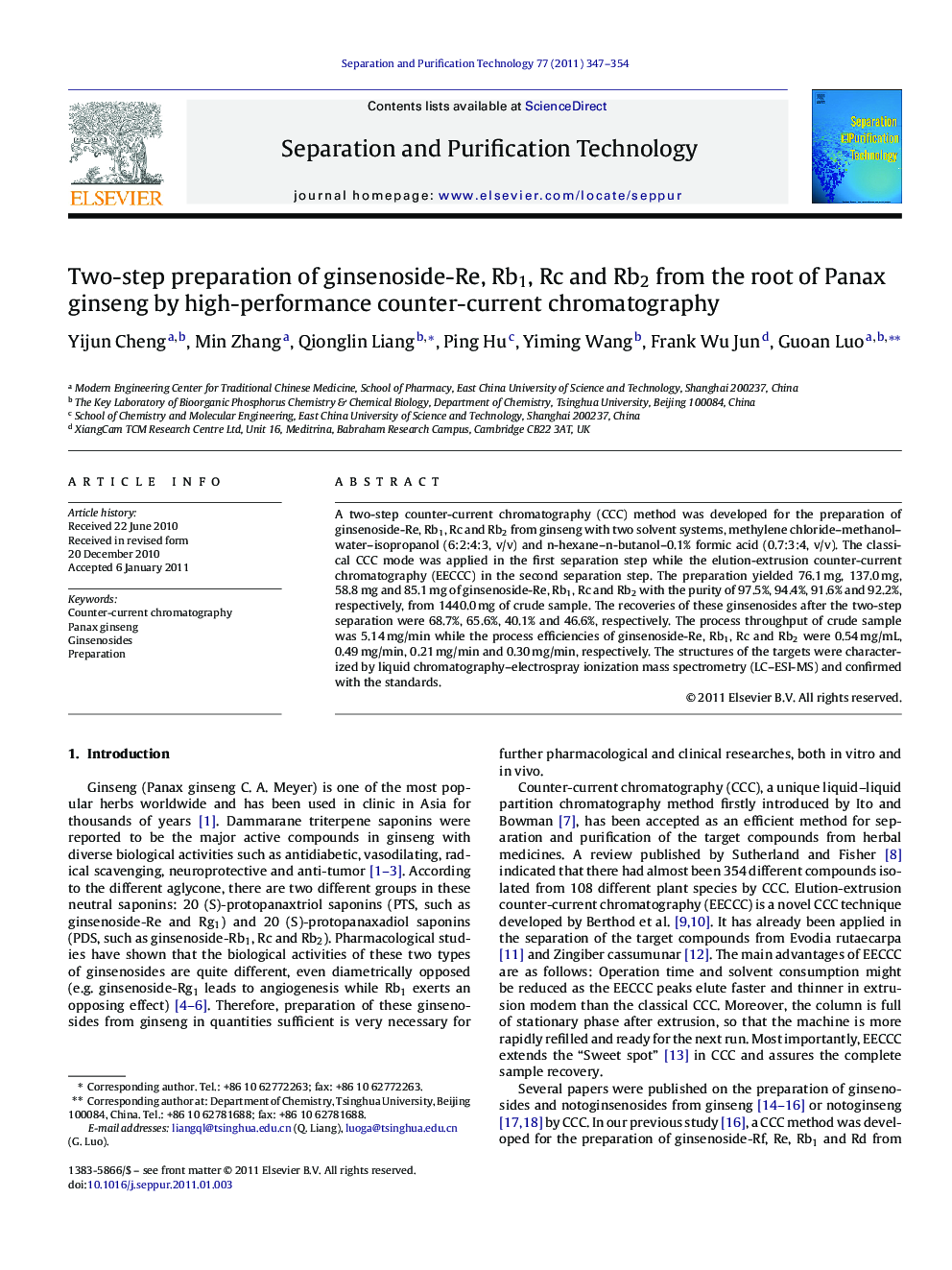| Article ID | Journal | Published Year | Pages | File Type |
|---|---|---|---|---|
| 642789 | Separation and Purification Technology | 2011 | 8 Pages |
A two-step counter-current chromatography (CCC) method was developed for the preparation of ginsenoside-Re, Rb1, Rc and Rb2 from ginseng with two solvent systems, methylene chloride–methanol–water–isopropanol (6:2:4:3, v/v) and n-hexane–n-butanol–0.1% formic acid (0.7:3:4, v/v). The classical CCC mode was applied in the first separation step while the elution-extrusion counter-current chromatography (EECCC) in the second separation step. The preparation yielded 76.1 mg, 137.0 mg, 58.8 mg and 85.1 mg of ginsenoside-Re, Rb1, Rc and Rb2 with the purity of 97.5%, 94.4%, 91.6% and 92.2%, respectively, from 1440.0 mg of crude sample. The recoveries of these ginsenosides after the two-step separation were 68.7%, 65.6%, 40.1% and 46.6%, respectively. The process throughput of crude sample was 5.14 mg/min while the process efficiencies of ginsenoside-Re, Rb1, Rc and Rb2 were 0.54 mg/mL, 0.49 mg/min, 0.21 mg/min and 0.30 mg/min, respectively. The structures of the targets were characterized by liquid chromatography–electrospray ionization mass spectrometry (LC–ESI-MS) and confirmed with the standards.
Graphical abstractFigure optionsDownload full-size imageDownload as PowerPoint slideResearch highlights▶ Large-scale and efficient preparation of ginsenoside-Re, Rb1, Rc and Rb2. ▶ EECCC was applied in the second step separation. ▶ Ginsenoside-Rc and Rb2 were prepared by CCC for the first time.
